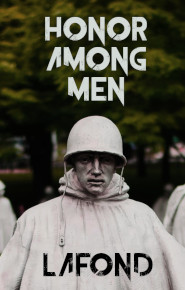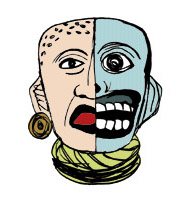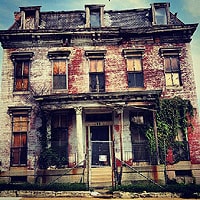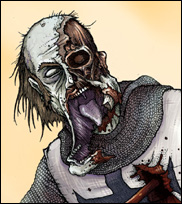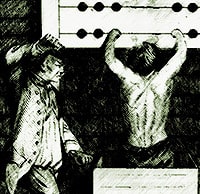The same deck of cards that has been used for the Mustering Phase is retained, as is, for Marshaling.
The Unfortunate Player draws first.
The first draw determines which player chooses his side of the table first. The players now take their positions. Units will be placed from that orientation. This will be a much more interesting phase with multiple players. That option will be discussed in latter chapters.
The estate advantage is reversed from Mustering. This represents the lower class advantage in terrain knowledge, the use of scouts by an invader [1] drawn from expatriate nobility, the traitorous nature of the merchant class, and as well the initiative of the invader. In Post Modern society, we think of the invaded nation as in the most peril, largely due to the world scorching power of industrial weapons and the fact that the invader, since 1939, has almost always had Air Superiority or Air Supremacy, placing the invaded nation in the position of the Pharaoh resisting the will of God. However, for most of human history, the invader was the more desperate party. [2]
Placement of units on the board are determined by card draw. When the two cards are drawn, they are compared. Unlike in the Muster, he who goes first is at a disadvantage. Battle is also a case of the person going first having a tactical disadvantage.
The order of unit placement for each draw is
-Spades
-Hearts
-Diamonds
-Clubs
In case both players draw the same suit, the Fortunate Player places units first and the Unfortunate Player second. These suits, in the Marshaling Phase, are simply used to determine order of placement, with the player setting out his units second, having the advantage of countering the initiating player’s set up. This aspect of initiative, of the player that must move first according to the card draw being at a disadvantage, is maintained throughout Battle and Rout.
Recall the values of the cards:
2 thru 10
-Jack = 11
-Queen = 12
-King = 14
-Ace = 15
-Low Joker = 16
-High Joker = 17
That value determines how many and what type of units might be deployed on that draw.
Unit Placement
-1. Static Units, these being garrisons or rebels, may be placed anywhere. These must also be placed before any other units are placed. Placing a static unit costs no deployment points, and precedes the placement of the points determined by the card draw.
After, yes AFTER, the static units have been placed, a center point is measured, halfway between the players’ respective board edges.
-2. The First Active Unit placed MUST be the commanding unit, the guard, signified by the quarter token. This unit must be placed within movement range of the Mid Point. It was a fact of pre industrial warfare, that generals and field marshals [3] were commonly in peril. The death toll among generals finally became intolerable by 1864. Also, communication, prior to radio, was done by dispatch riders, musical instruments and flags. For this reason, it will be crucial for as many units as possible to be able to “see” and be “seen by” the commander. The mechanics will be covered in Battle. At this point, keep in mind that a Command Unit being hidden [as would be done in Post Modern warfare] or for a special unit to be hidden from the commander’s view, might result in a gap in command and control. It is recommended, that command units be placed on a high point. In ancient and medieval combat, this is generally not the case, and will be addressed in its place.
If the commanding unit exceeds the number of points awarded for this round of placement, the excess points are deducted from the next draw.
-3. Placement of active units must be made on the placing player’s side of the mid point. Each unit is placed according, not to its strength, but to its type, with the cost reflecting the operational difficulty of getting that unit type into battle position.
Placement Costs Are Determined by Unit Type
Battery: 6
Battalion: 4
Troop: 3
Company: 2
…
Battlefield Objectives
Think about the impact of the U.S. Flag raised on Mount Sirabachi in the Pacific War.
Lesser known is the impact of the possession of the Devils Den at Gettysburg, the stone wall at Fredericksburg and the hill occupied by Benteen’s command at little Big Horn. At Waterloo, the possession of “The Rock,” of Hugamonte, an estate on a hill, was of such importance that there was game designed to simulate just this portion of the great battle.
Once all units are placed, the final aspect of marshaling, is determining the objectives of the players concerning possession of the battlefield. These goals are key to Army Morale and are addressed in Battle and Rout.
Possession of These Keys are worth points. These points are determined by cards that are randomly placed out of the deck.
The objective phase consists of 5 card draws:
-1. The Fortunate Player draws a card and places it face up, on HIS side of the mid point.
-2. The Unfortunate Player Draws and places it face up on the enemy’s side.
-3. The Fortunate Player draws and places that card face up on the enemy’s side of the mid point.
-4. The Unfortunate Player draws a card, does not look at it, and places it face down on the enemy side.
-5. The Fortunate Player draws blind, as in 4 above, and places that card face down on the enemy side.
These Objective cards are now in play and out of the deck.
The result will be that the Fortunate Side has 3 Objectives to defend, more to lose, and the Unfortunate side has only 2 Objectives to guard against and 3 to take, with more to gain. The tendency of this will be to encourage the player with the smaller force to attack, which was typical of pre industrial warfare.
Objectives Must be Placed at or beyond the mid point of the placing player:
-A. At a village or manor
-B. On a hill
-C. At the mid point, just on the other side of the line, within a card length
-D. Half way between the Command Unit and his board edge, representing a supply depot or baggage train.
-E. Under a battery. This has the effect of rendering this unit so important to army morale that it must not move, ever. [4]
-F. Under a guard unit, yours or his, a choice that means that card moves with that unit. This was the main objective in ancient warfare, to wipe out the enemy king. It survived in early modern war with such famed war kings as Charles of Sweden, Frederick the Great, George Washington, Napoleon, Robert E. Lee, etc.
Objectives may not be wooded or wetland, unless in a village or manor.
The effect of taking such a position is that the value of that card is applied to the opposing armies. If the value is an odd number, than the player achieving this goal takes the larger portion. Let’s say a hill is marked with a Jack, worth 11. The player losing that hill must take 5 losses from units within their movement rate of that hill. Losses are covered in Battle. The army who gained the objective may restore losses to units within movement range of the objective. Restoration is also covered in Battle.
So, taking a distant hill with a company of rangers, which is out of range of the main armies, would only restore the morale of the company and afflict the morale of whatever unit was driven off the hill. Losses in this game are mostly psychological. The rout phase, and the use of artillery against batteries and battalions is where the real slaughter takes place.
But, taking the midpoint objective, within range of the main body of armies, has a great effect on both armies. Once an objective is taken it must be held to count towards victory points.
Victory points are covered under Rout.
…
Notes
-1. Malinche leading Cortez against the Aztec oppressors of her people, the Deposed Spartan King advising Xerxes in his invasion of Hellas, etc.
-2. The most desperate examples are Alexander striking into the Persian Empire, Caesar at Alesia and Cortez burning his ships behind him and marching on the Aztec Empire with only a few companies of men and one troop of horse.
-3. A Field Marshal, was, of course, the general who arranged the disposition of his army. This was his point of maximum control. Dust screens from horse movement, smoke screen from black powder and obscuring terrain, reduced the effectiveness of command as the battle wore on. The reserve, a unit held back within view of the commander, was the greatest reactive option of the overall commander, once lead began to fly.
-4. The hilltop artillery of the American army under General Saintclair in 1791, was an excellent example. The canon of Cortez is another. If Custer had brought his Gatling guns, that would be such a case, the technology itself having a great effect on the spirits of both armies.


